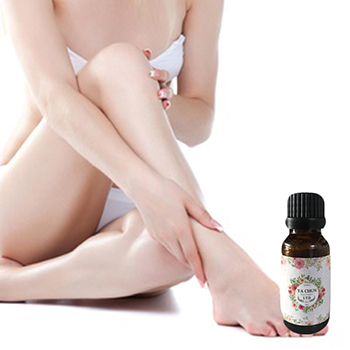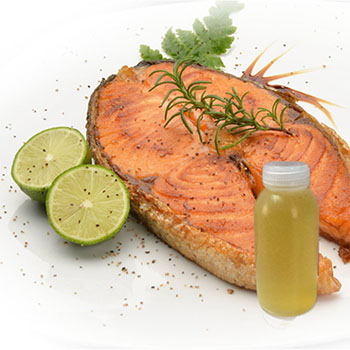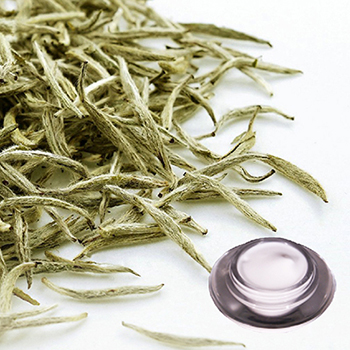目前購物車內沒有商品
Latin Name: Aesculus hippocastanum
Pharmacopeial Name: Hippocastani semen
Other Names: Spanish chestnut, buckeye
Overview:
Horse chestnut seed extract (HCSE) is derived from a deciduous tree that grows up to 25 meters. It has spread throughout the northern hemisphere, but is native to the central Balkan peninsula.
German pharmacopeial grade horse chestnut seed, which is the material required for manufacture of the above specified native dry extract, consists of the dried seed of Aesculus hippocastanum L. It must contain not less than 3.0% triterpene glycosides, calculated as anhydrous escin, with reference to the dried drug. Botanical identity must be confirmed using thin-layer chromatography (TLC) as well as macroscopic and microscopic examinations (DAB, 1997). The typical drug-to-extract ratio for this native dry extract will fall within the range of depending on the chemical composition of the starting material and the subsequent yield of soluble extractive.
The History of Horse Chestnut Extract:
Horse chestnut extract has been used by European doctors since the 1800s to treat varicose veins, hemorrhoids and other vascular and circulatory disorders. In Germany, horse chestnut extract is one of the most common prescription herbal remedies. The main therapeutic ingredient in horse chestnut is triterpenic sapoin asecin. Aescin, sometimes spelled escin, decreases inflammation in the veins and strengthens or tones up the vein walls, improving the flow of blood back to the heart.
There are a number of clinical trials in European medical literature, which document the effectiveness of this herbal extract. In 1998, the well-respected scientific American journal, Archives of Dermatology published a review of 13 clinical trials. The reviews concluded that horse chestnut extract was superior to placebo and equivalent in effectiveness to compression therapy. In looking at total results, horse chestnut significantly reduced edema and study participants reported less pain, fatigue, tenseness and itching in their legs at the end of treatment. Further, positive changes were noted within two weeks in several of the studies, and the benefits lasted at least six weeks after treatment ended.
Horse chestnut seeds are the most commonly used plant part for making medicinal remedies and herbal preparations. The seeds of the horse chestnut contain a chemical saponin known as aescin, which in clinical studies has been reported to promote increased blood circulation. Aescin purportedly is able too promote blood circulation through the veins by increasing the tone in the walls of the veins, whereby enabling blood to flow unrestricted. Its ability to promote blood circulation has made horse chestnut a popular treatment, both topically and internally, for both chronic venous insufficiency and varicose veins.
More recent studies indicate that aescin (extracted from horse chestnut seeds) may also possess anti-inflammatory effects useful in reducing edema, swelling caused by excess fluid, as result of injuries. As a topical application, aescin is also popular in Europe for treating sprains. Additionally, poultices of the seed have been used in connection with skin ulcers and skin cancer, although there are no studies to confirm the effectiveness of this application.
Historically, leaves of the horse chestnut plant have been used medicinally to relieve cough, to reduce fever, and to relieve pain and inflammation associated with arthritis. But again the medicinal value of horse chestnut leaves has not been proven.
The horse chestnut herb contains additional substances that contribute to its medicinal effects. These include flavonoids, sterols, and tannins.
Horse Chestnut is an astringent and anti-inflammatory. The unique actions of Horse Chestnut are on the vessels of the circulatory system. It increases the strength and tone of the veins in particular. It is used internally to aid the body in the treatment of problems such as varicose and spider veins, phlebitis, inflammation in the veins, varicosity and hemorrhoids.
In Germany, Commission E, which is the equivalent of the U.S. Food and Drug Administration approves standardized horse chestnut for treatment of conditions of the veins of the legs, including varicose and spider veins, a sensation of heaviness, nocturnal cramping of the calves, pruritis, and swelling. This condition is described medically as chronic venous insufficiency.
Horse chestnut is popular throughout Europe for the treatment and prevention of those conditions, and for hemorrhoids - which are no more than varicose veins of the anus and rectum. Horse chestnut is also used to soothe sports injuries, such as strains and sprains. Some research indicates that horse chestnut is valuable in the treatment of wrinkles, hair loss, cellulite, backache, and arthritis.
Description:
A dry extract manufactured from horse chestnut seeds, A. hippocastanum L. [Fam. Hippocastanaceae], adjusted to a content triterpene glycosides calculated as anhydrous escin.
Chemistry and Pharmacology:
Horse chestnut seed contains a complex mixture of triterpene saponins collectively referred to as escin (Morgan and Bone, 1998), including the triterpene oligoglycosides escins, Ia, Ib, IIa, IIb, and IIIa (Yoshikawa et al., 1996), the acylated polyhydroxyoleanene triterpene oligoglycosides escins IIIb, IV, V, and VI and isoescins Ia, Ib, and V (Yoshikawa et al., 1998), and the sapogenols hippocaesculin and barringtogenol-C (Konoshima and Lee, 1986); flavonoids (e.g., flavonol glycosides); condensed tannins (Newall et al., 1996); quinones; sterols, including stigmasterol, a-spinasterol, and b-sitosterol; and fatty acids, such as linolenic, palmitic, and stearic acids (Leung and Foster, 1996).
As found in different animal experiments, the principal ingredient in HCSE is the triterpene glycoside mixture, aescin (escin), which has an anti-exudative and vascular-tightening effect. There are indications that HCSE reduces the activity of lysosomal enzymes that is increased in chronic pathological conditions of the veins, so that the breakdown of glycoacalyx (mucopolysaccharides) in the region of the capillary walls is inhibited. The filtration of low-molecular proteins, electrolytes, and water into the interstitium is inhibited through a reduction of vascular permeability. Using placebo as reference, a significant reduction of transcapillary filtration has been demonstrated in pharmacological studies involving human subjects, and a significant improvement shown in the symptoms of chronic venous insufficiency (sensation of tiredness, heaviness and tension, pruritus, pain and swelling in the legs) in randomized double-blind studies and cross-over studies.
Pilot studies are available on the toxicology of HCSE. The oral LD50 of the extract is per kg body weight in mice, per kg body weight in rats, body weight in rabbits, and per body weight in dogs. In rats, the "no effect" dose is between per kg body weight after intravenous administration of HCSE over a period of eight weeks. Chronic administration above per kg body weight over a period weeks produced gastric irritation in dogs. In rats, no toxic changes were observed throughout the same period up to an oral dose of per kg body weight.

Active Ingredients:
Horse chestnut contains several triterpene glycosides, with aescin predominating in the seeds.
Coumarin glycosides aesculin, fraxin, and scopolin and their corresponding aglycones, aesculetin, fraxetin, and scopoletin, are also found, along with flavonoids such as quercetrin. Allantoin, leucocyanidins, tannins, and the plant sterols sitosterol, stigmasterol, and campesterol have also been identified.
The commercial horse chestnut extract utilized in Germany is standardized to contain from 16 to 21 percent triterpene glycosides (calculated as aescin).
Chemical Component:
Saponins (aescins groups), flavonoids (quercetin, kacempferol), coumarins.
Forms:
1. powder
2. ointment
3. lotion
4. liquid
5. gel
6. cream
7. capsule

The European horse chestnut, Aesculus hippocastanum , is the horse chestnut most frequently used in herbal medicine. It is a member of Hippocastanacea family. Horse chestnuts are in an entirely different botanical family from the well-known sweet chestnut tree, Castanea vesca. Horse chestnuts exist in nature as both a tree and a shrub, and are found in all temperate regions of Europe, Asia, and North America.
There are 15 recognized species of horse chestnut. The European horse chestnut is believed to have originated in the Balkan region of eastern Europe but is now grown in every country in the Northern Hemisphere.
The fruit of the horse chestnut is a dark brown, smooth surfaced nut approximately in diameter. It has a polished appearance except for the rounded dull tan-colored scar on the side that was attached to the seed vessel. Horse chestnuts are encased in a light green, spine-covered coating which divides into three parts and drops away prior to the nut dropping from the tree. Horse chestnut nuts contain mostly carbohydrates which are generally indigestible until boiled. They also contain saponins, tannin, flavones, two glycosides, aesculin and fraxin, some crude protein, a fatty oil, ash and water.
Horse chestnut bark is removed in the spring, in strips long, about 1 in thick and broad. The fruit of the horse chestnut is gathered in the autumn, when they fall from the tree. Both the bark and the fruit are dried in sunlight or with artificial heat, and are either kept whole or ground to a powder for storage. A decoction, made of 1 or 2 tsp of the dried, pulverized bark or fruit left to simmer for 15 minutes in 1 cup of water can be either taken internally three times a day or used externally as a lotion. Horse chestnut preparations are also available as tinctures, extracts, capsules, and external ointments and lotions.
Horse chestnut has been used in connection with the following conditions (refer to the individual health concern for complete information):
How much is usually taken?
For treatment of chronic venous insufficiency horse chestnut seed extracts standardized for aescin content, two to three times per day, are recommended. Tincture, taken three times per day, can be used though it is questionable whether a significant amount of aescin can be absorbed this way. Gels or creams containing aescin can be applied topically three or four times per day for hemorrhoids, skin ulcers, varicose veins, sports injuries, and trauma of other kinds.
Whole horse chestnut is classified as an unsafe herb by the FDA. Eating the nuts or drinking a tea made from the leaves can cause horse chestnut poisoning, the symptoms of which include nausea, vomiting, diarrhea, salivation, headache, breakdown of red blood cells, convulsions, and circulatory and respiratory failure possibly leading to death. However, manufacturers of the typical European standardized extract formulations remove the most toxic constituent (esculin) and standardize the quantity of escin. To prevent stomach irritation caused by another ingredient of horse chestnut, the extract is supplied in a controlled-release product, which reduces the incidence of irritation to below even at higher doses.
Properly prepared horse chestnut products appear to be quite safe. After decades of wide usage in Germany, there have been no reports of serious harmful effects, and even mild reported reactions have been few in number.
In animal studies, horse chestnut and its principal ingredient escin have been found to be very safe, producing no measurable effects when taken at dosages seven times higher than normal. Dogs and rats have been treated for weeks with this herb without harmful effects. Studies in pregnant rats and rabbits found no injury to embryos at doses up to times the human dose, and only questionable effects at times the dose.
However, individuals with severe kidney problems should avoid horse chestnut. In addition, injectable forms of horse chestnut can be toxic to the liver.
Horse chestnut should not be combined with anticoagulant or "blood-thinning" drugs, as it may amplify their effect. The safety of horse chestnut in young children and pregnant or nursing women has not been established. However, 13 pregnant women were given horse chestnut in a controlled study without noticeable harm.
Horse Chestnut in Dr.Hauschka Skin Care Products and WALA Medicines
Horse Chestnut lives in the polarity of light/lightness and darkness/heaviness. The seeds germinate completely in the heavy darkness of the earth. Once the shoot reaches the daylight it then strives at a rapid pace towards the light: in the first year the young tree already reaches a height feet. The leaves, a delicate diaphanous green when they first appear in the spring, become steadily darker and heavier with increasing age. Horse Chestnut trees have been planted for a long time as natural protection against the sun.
Heavy legs become lighter as a result of the positive action of Horse Chestnut on the blood vessels, e. in Dr.Hauschka Fitness Leg Spray and Fitness Foot Cream.
Because of the ability of aesculin to bind ultraviolet radiation Horse Chestnut is used as an ingredient of the preparations in the Dr.Hauschka natural sun care series.
The circulation promoting and tissue firming properties of Horse Chestnut are utilised in Dr.Hauschka Clarifying Toner, Herbal Hair Conditioner, Moor Lavender Body Oil and Neem Hair Lotion.
In WALA medicines, extracts of Horse Chestnut are contained in preparations for various vascular disorders, e.g. in Aesculus Essence* and Borago comp.*, and for the treatment of haemorrhoids in Quercus Haemorrhoid Suppositories*. In Solum uliginosum comp.* it helps in the treatment of rheumatic diseases and sensitivity to the weather.



